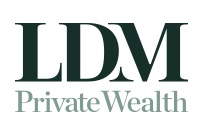Quarterly Property Update
It took the Reserve Bank just seven months to move the official cash rate from an historic low of 0.10% in April to 2.85% by November. The last time the RBA sent the rate up by 2.75% it took more than six years. Therefore, it isn’t any wonder why home values are falling – there’s been a shock to the system.
Although this shock has been short and sharp, and values are declining as a result, prices across the country are still well above pre-pandemic levels. Property experts are not yet willing to call the ‘bottom’ of the cycle, however, the RBA’s change from 0.50% to 0.25% increments is expected to calm the immediate panic.

Property past – its peak
Figures from PropTrack (realestate.com.au data business), show national values are -3.53% off their peak, but are still 30.2% above where they sat in March 2020 at the start of Covid. Their latest Home Price Index placed the combined capital cities -4.38% lower than their collective peak with the combined regions only -1.84% under.
Sydney is the city with the biggest gap between October 31 and its peak, down -6.28% according to PropTrack while Adelaide is currently at its peak. Regionally, South Australia, Tasmania and Northern Territory are also reportedly in peak conditions.
PropTrack senior economist and report author Eleanor Creagh said after several months of value declines – plus the fastest rise in the cash rate since 1994 – both buyers and sellers are gradually acclimatising.
“Sellers are adapting to market conditions after several months of price falls, whilst buyers are taking advantage of the less competitive conditions relative to spring last year and sentiment is finding a floor,” she said.
Ms Creagh added that as the RBA slows the pace of its hikes (from four 0.50% increases in a row to two 0.25% moves) prospective buyers are regaining confidence. In other good news for purchasers, there is an increase in supply compared to this time last year.
“From here, further rate rises will increase borrowing costs and reduce maximum borrowing capacities, weighing on prices. However, this will be offset by tight rental markets and rental price pressures, rebounding foreign migration, low unemployment, and housing supply pressures.”
It’s all in the numbers
According to the CoreLogic national Home Value Index, by October’s close there had been six months of consistent declines. The index revealed that over the last three months, national home values were down -4.1% to a median of $721,018.
During the same quarter, Brisbane has been home to the sharpest decline with values down -5.4%, followed closely by Sydney with a dip of -5.3%.
Canberra and Hobart also experienced decreases of -4.3% and -4.1% respectively with Melbourne’s correction sitting at -3.1%.
Adelaide and Perth felt minimal movement under 1% with falls of -0.6% and -0.7% while Darwin saw values sit steady with 0% change.
When CoreLogic number crunchers put the capital cities together there had been a combined slump of -4% and regionally values fell similarly by -4.1%
Although values are falling across the country, data shows the market’s extensive home price correction is anything but uniform from state to state, or city to city. The pace of declines has actually eased over the past two months across Sydney and the past three months in Melbourne, however, in Brisbane the decline is gathering momentum as home values there fell at the fastest speed of any capital city or rest-of-state region.
Tim Lawless, CoreLogic’s research director, said while values have been in negative territory for several months now, it’s still too soon to call the trough of the market just yet.
“Despite the easing in the pace of decline, with Australian borrowers facing the double whammy of further interest rate hikes along with persistently high and rising inflation, there is a genuine risk we could see the rate of decline re-accelerate as interest rates rise further and household balance sheets become more thinly stretched,” he said.
“To-date, the housing downturn has remained orderly, at least in the context of the significant upswing in values. This is supported by a below-average flow of new listings that is keeping overall inventory levels contained,” Mr Lawless added that we’re yet to see the full impact of rate rises as households likely still hold excess savings accumulated during lockdown, plus there is a large cohort of fixed rate borrowers who’ve so far been insulated from rapid rate rises.
Despite the nationwide price falls, CoreLogic reports housing values are still well above pre-Covid levels, which would imply most homeowners are sitting in a positive valuation position relative to their purchase price – as long as they bought before the pandemic.
For expert advice on buying in the current market, contact us today.
Note: all figures in the city snapshots are sourced from: CoreLogic’s national Home Value Index


